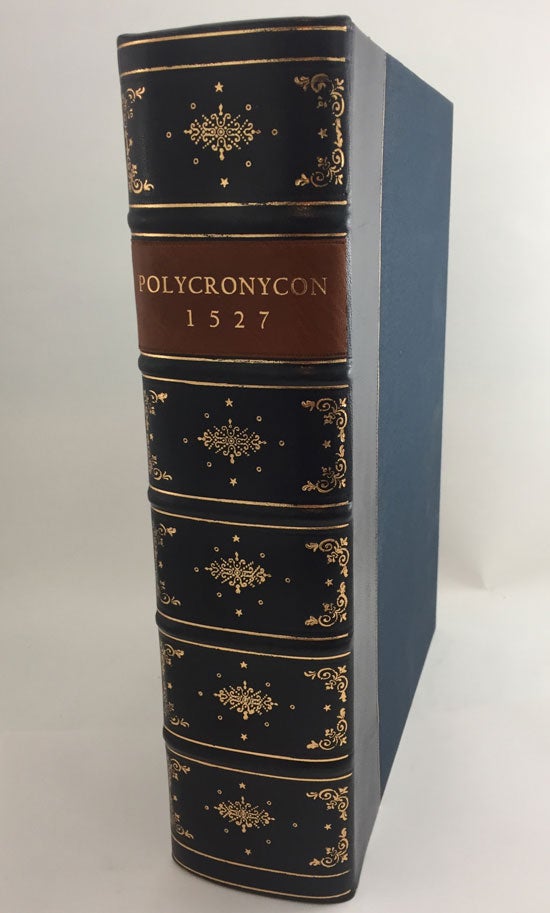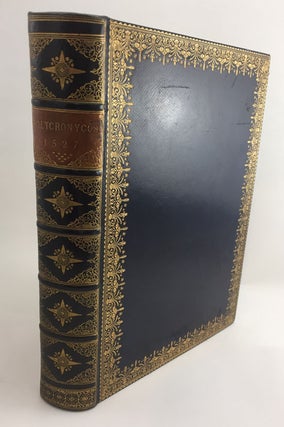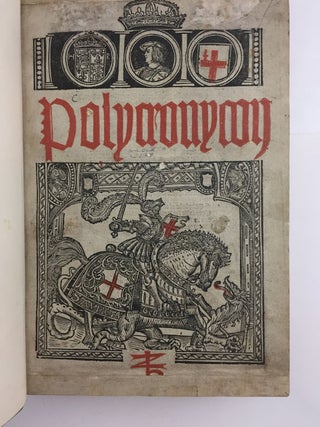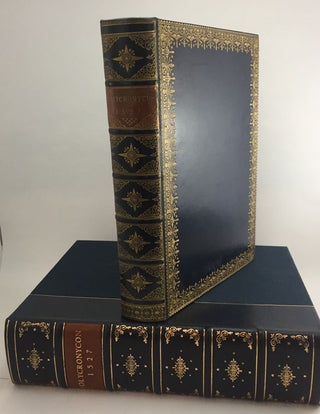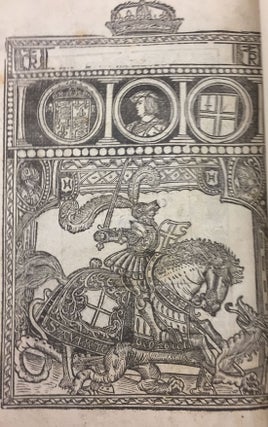Polycronicon
London: John Trevisa, 16 May 1527. Third edition. Leather Bound. Near Fine. Ranulf Higden, (12??-1364) entered the Benedictine Abbey of St. Werburgh, Chester in 1299. There is no evidence that he ever attended University or did much travelling. The one exception, which demonstrates his standing within the community of scholars and the respect merited by ìThe Polycronicon, ìoccurred when he was summoned by King Edward III to appear at court. ìFather Ralph, a monk of the abbey at Chesterí was summoned to Westminster on 21 August, and he was ordered to come ëwith all your chronicles, and those which are in your charge to speak and take advice with our council on certain matters which will be explained to you on our behalf.î A brief note in the Laud manuscript suggests that he died in 1364. Higdenís ìThe Polycronicon, ìhis ìuniversal chronicle,î is written in seven books to mirror the seven days of creation as depicted in the Bible. This work provided to the literate population of 14th Century England, an original and vivid narrative of world history, beginning at Creation, highlighting in particular, the Roman World and its relation to Roman Britain and again, a specific focus on the Norman Invasion. Higden left off his narrative in 1346. John Malvern (d. circa 1414) a monk from Worcester, picked up the narrative thread, beginning in 1348 and concluding in 1381. One theory explaining the two year gap is ìpossibly nothing noteworthy had occurred in them to require the labours of his penÖî This work is considered a national history and the foundation for dozens of subsequent works by authors such as Fabyan and Stowe. The first manuscript edition of ìThe Polycronicon, ìthe so-called ìshort versionî appeared about 1327. Over one hundred manuscripts still exist demonstrating its popularity. John Trevisa first provided an English translation sometime in the 1380ís. The first printed edition by Caxton appeared in 1482. The second edition was published by Wynkyn de Worde in 1495. The third edition and the first illustrated edition is this copy now on offer. This volume is a folio volume bound in dark blue morocco from the 18th century bound by Mackenzie and signed on the front free endpaper. Title page in red and black featuring St. George dramatically slaying the dragon, and bordering the top a crown sits atop a profile portrait of Henry VIII ?(Hodnett claims it is Henry VIII but it looks nothing like him), while on his left is the Royal Arms and on his right the Arms of the City of London. The printersí mark of John Reynes is present at the foot but the lower portion is missing due to remargining. Colophon at the rear with very nice hunting scene at lower border and the final page has a full-page depiction of St. George killing the poor dragon yet again and with the Reynes publishing mark depicted along the top border. The musical notation on n5r first appeared in the 1495 volume by Wynkyn de Worde and represents the first appearance of printed musical notation. All other engravings present in this volume appear for the first time. This volume comes from the collection the 19th Century Justice and acclaimed bibliophile William OíBrien. He donated much of his collection to Milltown Park Library which was administered by The Society of Jesus. Their plates, along with some catalog descriptions of earlier publications appear on the front paste-down. There are no library marks within the text of this book. Now housed in a beautiful custom made box to insure it lasts another 500 years, this is an extraordinary example of a very important volume in English History and English Literature. Cited ñ John Taylor, The Universal Chronicle of Ranulf Higden, Grolier-From Langland to Wither, 121; English Printers Marks, 45; Edward Hodnett ñ English Woodcuts 1480-1535, 458-459; STC 13440; Pforzheimer, 490.
Price: $40,000.00

